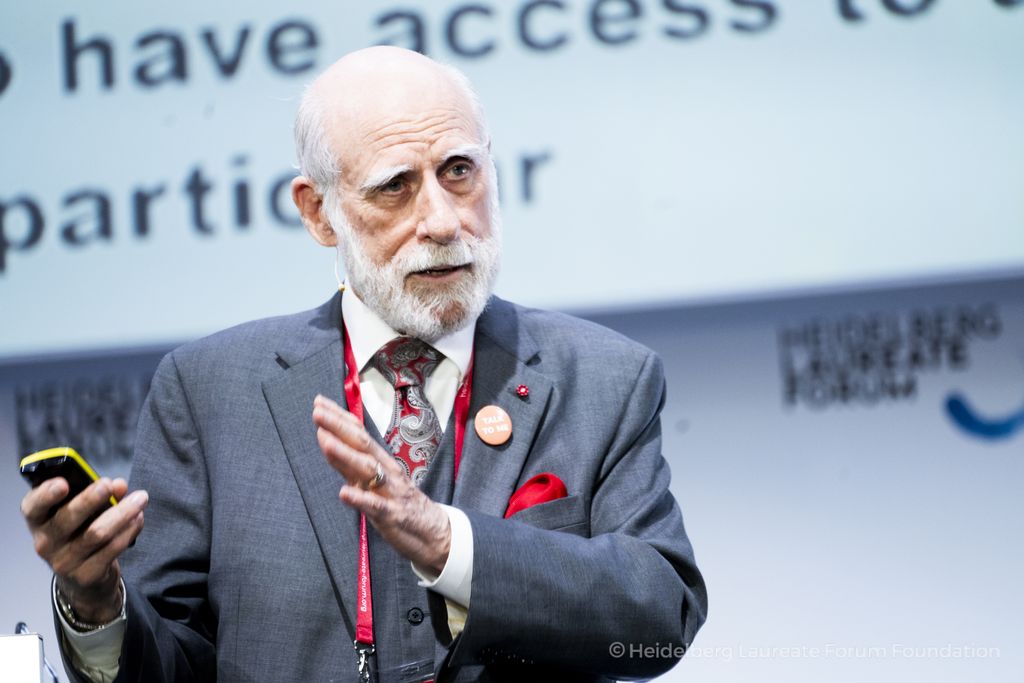Science
Vint Cerf Warns of Digital Information Loss at Heidelberg Forum

Digital information may face a precarious future, according to Vint Cerf, a key figure often referred to as one of the “fathers of the Internet.” Speaking at the recent Heidelberg Laureate Forum in Heidelberg, Germany, Cerf expressed significant concern about the preservation of digital content for future generations. He emphasized that the longevity of digital information is at risk due to the inherent fragility of current storage technologies.
Cerf highlighted a personal experience that illustrates this challenge: a recent update to an emulator rendered one of his classic computer games unplayable. This incident exemplifies a broader issue where reliance on digital formats can lead to loss or inaccessibility of information over time. He noted, “My big worry is that all this digital stuff won’t be there when we would like it to be there, or when our descendants would like to have it.”
Historically, the most effective means of preserving information involved durable materials such as clay tablets and high-quality paper. Cerf pointed out that these traditional media share a crucial advantage: they do not require electricity for storage. In contrast, many digital storage methods are based on magnetic materials that deteriorate over time. “Many of them are magnetic, and the magnetic material wears away after a while,” he explained. In some cases, attempting to access older data can result in permanent loss, as fragile tapes can disintegrate during the reading process.
The issue extends beyond mere data retrieval. Cerf emphasized that accessing stored information also requires compatible software and hardware. He recounted an instance where he attempted to read data from an old three-and-a-half-inch floppy disk. Retrieving the information necessitated a series of components: a functional drive, suitable software to open the files, and an older computer capable of running that software. “I needed a whole lot of software help and several stages in order to make that digital content useful,” Cerf remarked.
To address the risks associated with digital information loss, Cerf proposed several innovative solutions for creating more durable storage methods. One intriguing approach involves a New Jersey-based company called SPhotonix, which is conducting research and development across the UK and Switzerland. This company is exploring the use of lasers to inscribe data into quartz crystals, a medium known for its longevity. Although promising, Cerf noted that these crystals are currently the size of hockey pucks, necessitating further work to optimize information organization.
Another solution comes from Cerabyte, a start-up with facilities in Austria, Germany, and the United States. Inspired by the durability of clay tablets, Cerabyte claims to have developed a ceramic material capable of storing data virtually indefinitely.
Cerf’s most compelling idea involves writing digital information into DNA. While it may seem fragile, he asserted, “It’s actually a very robust molecule – otherwise, life wouldn’t have persisted for several billion years.” He explained that dehydrated DNA can remain viable for extended periods, making it an intriguing candidate for durable information storage.
Despite his enthusiasm for these potential solutions, Cerf acknowledged that developing methods to read this information remains a significant challenge. He appealed to young researchers at the forum, urging them to recognize the importance of preserving digital content. “I want you to appreciate the scope of the work that is required to preserve digital things,” he emphasized. Without such efforts, he cautioned, “recreating a digital environment in 100 years is not going to be a trivial matter.”
Cerf’s insights underline the urgent need for innovation in digital preservation. As technology continues to evolve, ensuring that our digital legacy endures will require dedicated work and collaboration across fields. The future of digital information preservation may well depend on the next generation of researchers taking up this crucial challenge.
-

 Entertainment3 months ago
Entertainment3 months agoAnn Ming Reflects on ITV’s ‘I Fought the Law’ Drama
-

 Entertainment4 months ago
Entertainment4 months agoKate Garraway Sells £2 Million Home Amid Financial Struggles
-

 Health3 months ago
Health3 months agoKatie Price Faces New Health Concerns After Cancer Symptoms Resurface
-

 Entertainment3 months ago
Entertainment3 months agoCoronation Street’s Carl Webster Faces Trouble with New Affairs
-

 Entertainment3 months ago
Entertainment3 months agoWhere is Tinder Swindler Simon Leviev? Latest Updates Revealed
-

 Entertainment4 months ago
Entertainment4 months agoMarkiplier Addresses AI Controversy During Livestream Response
-

 Science1 month ago
Science1 month agoBrian Cox Addresses Claims of Alien Probe in 3I/ATLAS Discovery
-

 Entertainment4 months ago
Entertainment4 months agoKim Cattrall Posts Cryptic Message After HBO’s Sequel Cancellation
-

 Entertainment3 months ago
Entertainment3 months agoOlivia Attwood Opens Up About Fallout with Former Best Friend
-

 Entertainment6 days ago
Entertainment6 days agoCoronation Street Fans React as Todd Faces Heartbreaking Choice
-

 Entertainment3 months ago
Entertainment3 months agoMasterChef Faces Turmoil as Tom Kerridge Withdraws from Hosting Role
-

 Entertainment4 months ago
Entertainment4 months agoSpeculation Surrounds Home and Away as Cast Departures Mount





















